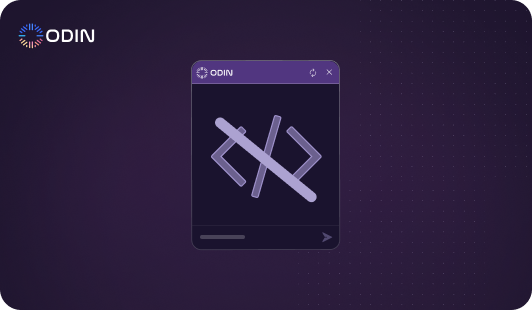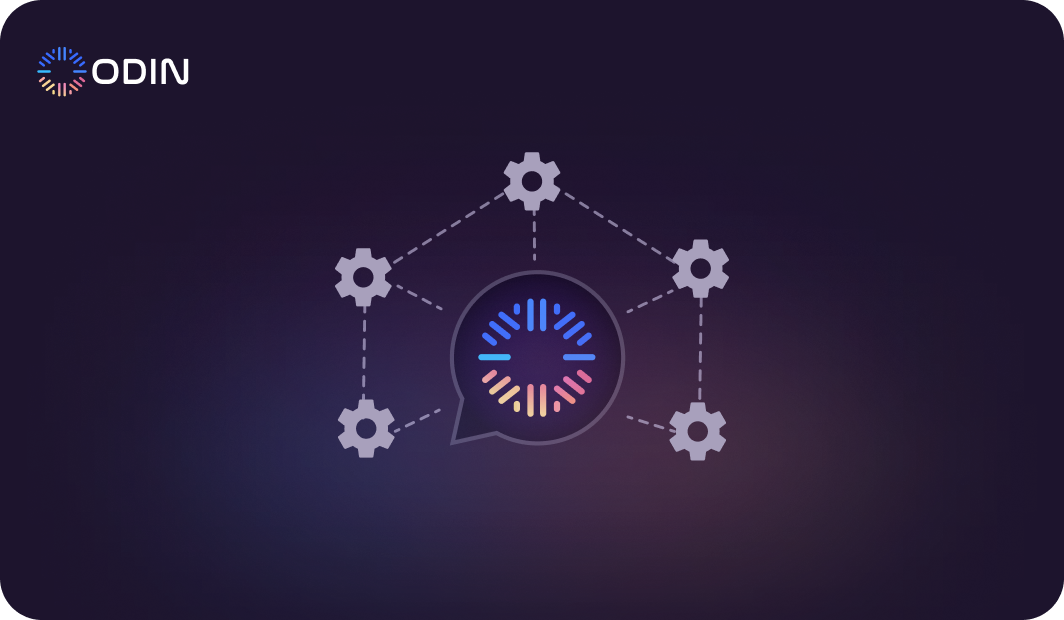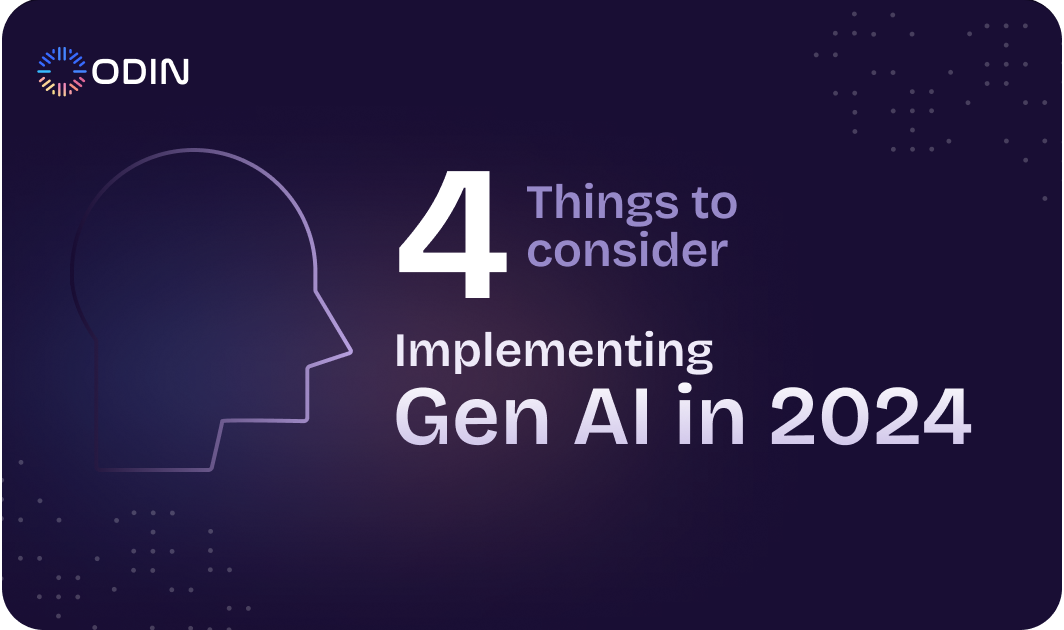Many businesses face issues where their chatbots fail to answer simple customer questions correctly. This happens because the chatbot lacks proper training. AI chatbot training helps chatbots understand user language, recognize questions, and provide accurate answers.
This blog explains how to train a conversational AI chatbot using natural language processing (NLP), training data, and machine learning algorithms. It shows how businesses can improve chatbot performance to meet user needs, reduce dependency on human agents, and align with their goals.
For example, a trained chatbot can handle routine questions while employees focus on more complex tasks.
Odin AI offers an easy-to-use platform for businesses to create and train chatbots. It helps improve chatbot performance with features like intent classification, entity recognition, and real-time learning from customer interactions.
Elevate your business chatbot response with Odin AI
Recommended Reading
Retail AI Chatbot Guide: Improving Customer Experience
What Is Chatbot Training?
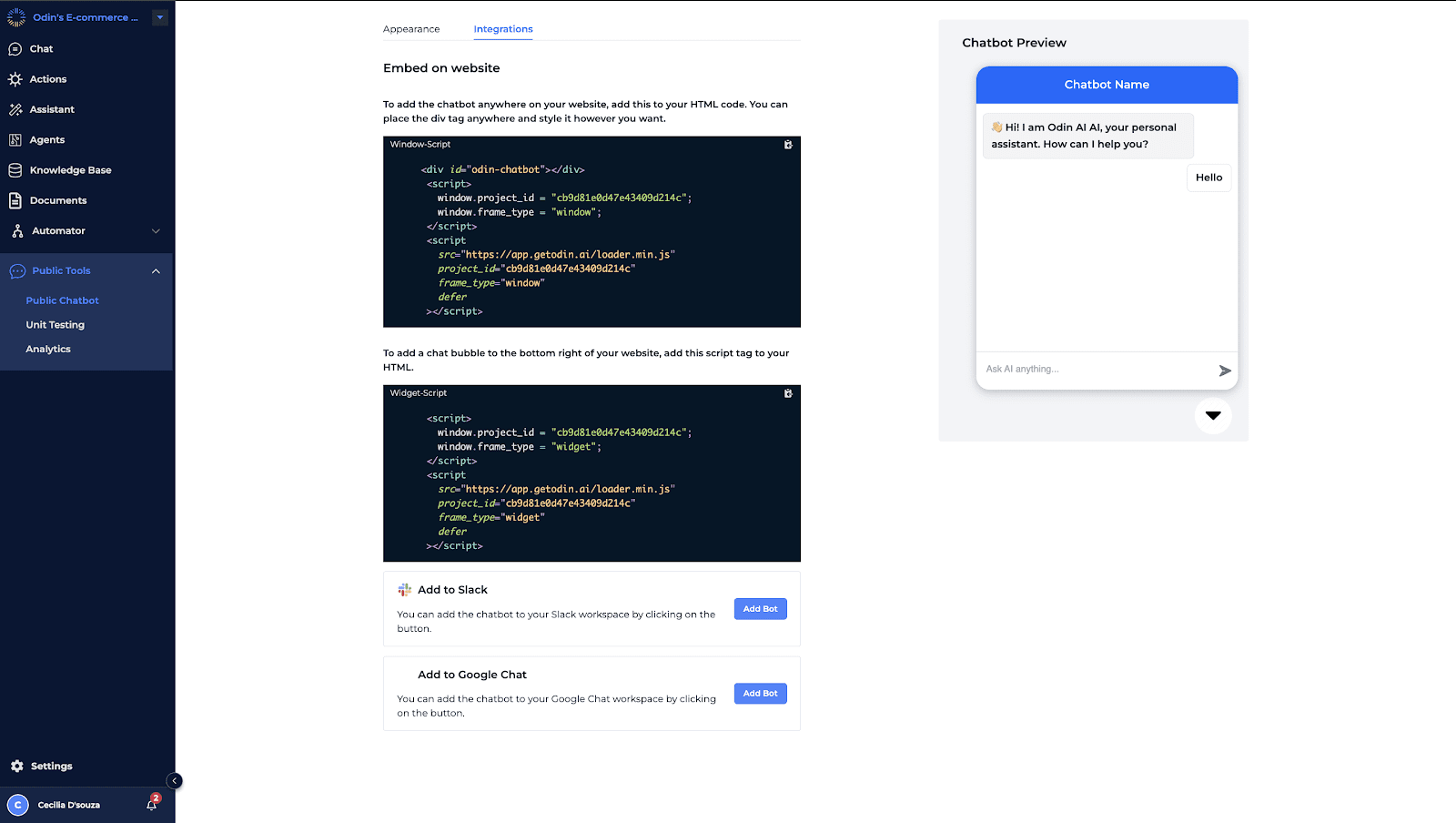
AI chatbot training involves teaching a chatbot to understand user questions and provide accurate answers. Imagine asking a chatbot, “Where is my order?” and receiving a confusing or irrelevant response.
This happens when the chatbot has not been trained properly to handle user queries or recognize user intent. Training solves this issue by using training data, machine learning algorithms, and NLP to improve the chatbot’s ability to deliver accurate and useful responses.
User expectations can change quickly. A healthcare chatbot, for instance, may begin with simple questions like “What time does the clinic open?” but over time, users might start asking about symptoms or specific treatments.
To handle these new demands, businesses must retrain the chatbot with new data and update it to align with user queries. Without regular updates, the chatbot cannot stay effective or helpful.
How to Set Up Your Chatbot
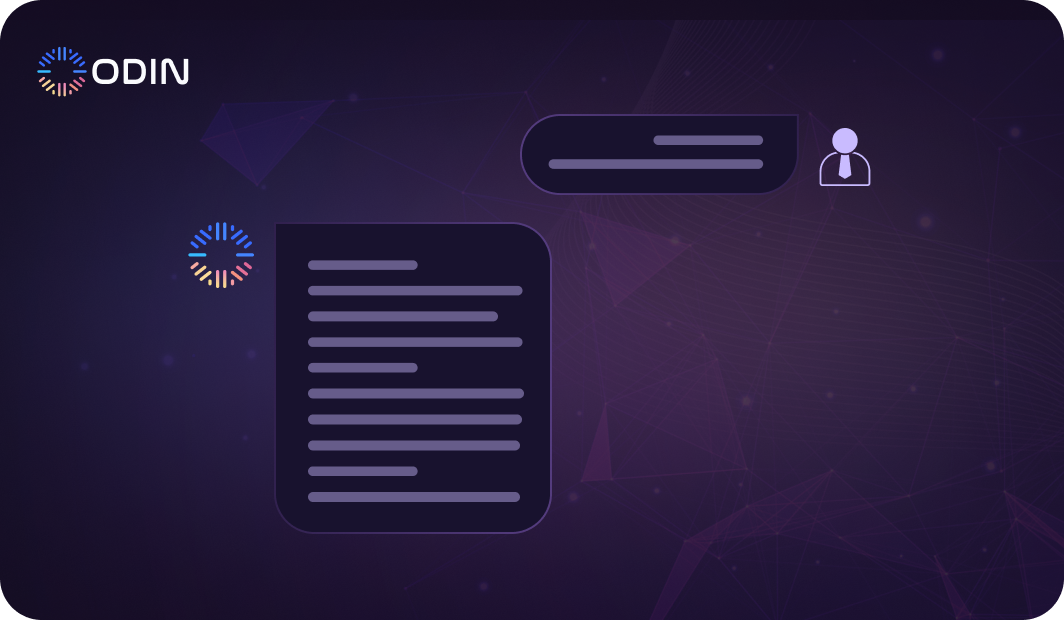
Check out how to approach setting up your chatbot and what you need to do to create a successful model:
Choosing the Right Chatbot Platform
The first step in AI chatbot training is selecting a platform that aligns with your business goals. A quality platform streamlines the training process and allows teams to build effective bots without technical expertise. When choosing a platform, consider:
- Ease of use: A chatbot builder with a simple interface helps non-technical teams create and train a chatbot.
- Integration capabilities: The platform should connect with tools like CRMs, knowledge bases, or e-commerce systems to enhance the chatbot’s functionality.
- NLP and AI features: These allow the chatbot to use natural language processing to understand user input, recognize user intent, and deliver relevant responses.
Odin AI stands out as a platform that simplifies the creation and training of AI chatbots. Its advanced NLP capabilities and intuitive tools help businesses set up bots to manage customer queries and improve customer satisfaction.
Defining the Purpose of the Chatbot
Clearly defining the chatbot’s purpose helps guide its setup and training process. Businesses need to answer key questions:
- What tasks will the chatbot handle? Examples include resolving common user queries, providing product information, or assisting with order tracking.
- Who are the users? Understanding user preferences and typical user interactions ensures the chatbot meets their needs.
- How complex should the chatbot be? A general FAQ bot may require a basic setup, while domain-specific chatbots need more advanced training with specialized training data.
Setting Up Intents and Entities
Chatbots rely on intents and entities to process and respond to queries. Intents represent the goals behind a query, such as “Track my package” or “Check my account balance.”
On the other hand, entities are the specific details needed to fulfill the intent, such as an order number, a date, or a product name.
For example, an AI chatbot in e-commerce must recognize the intent to track an order and extract the order number as an entity. This helps the chatbot provide accurate responses.
Using Training Data to Train a Chatbot
The quality of training data directly affects a chatbot’s ability to respond accurately. Businesses should collect:
- Conversation data from previous interactions with customers, such as chat transcripts or email inquiries.
- Examples of common user queries and their solutions.
- User feedback on chatbot interactions to refine responses and improve accuracy.
Training with diverse and high-quality data helps the chatbot make accurate predictions and handle a variety of scenarios.
Testing the Chatbot’s Performance
Once the chatbot is set up, testing it in real-world scenarios helps identify weaknesses in its responses. Measure key metrics like:
- Accuracy of responses: Does the chatbot give the right answers?
- Response time: Does it answer quickly and effectively?
- User satisfaction: Are users happy with the chatbot’s performance?
Odin AI offers tools to test and improve chatbot responses by analyzing user feedback and adjusting based on new data. Regular testing ensures the chatbot stays reliable and continues to meet user expectations.
Build Your Own Custom Chatbot with Odin AI. Try it today!
How Odin AI Supports Chatbot Training
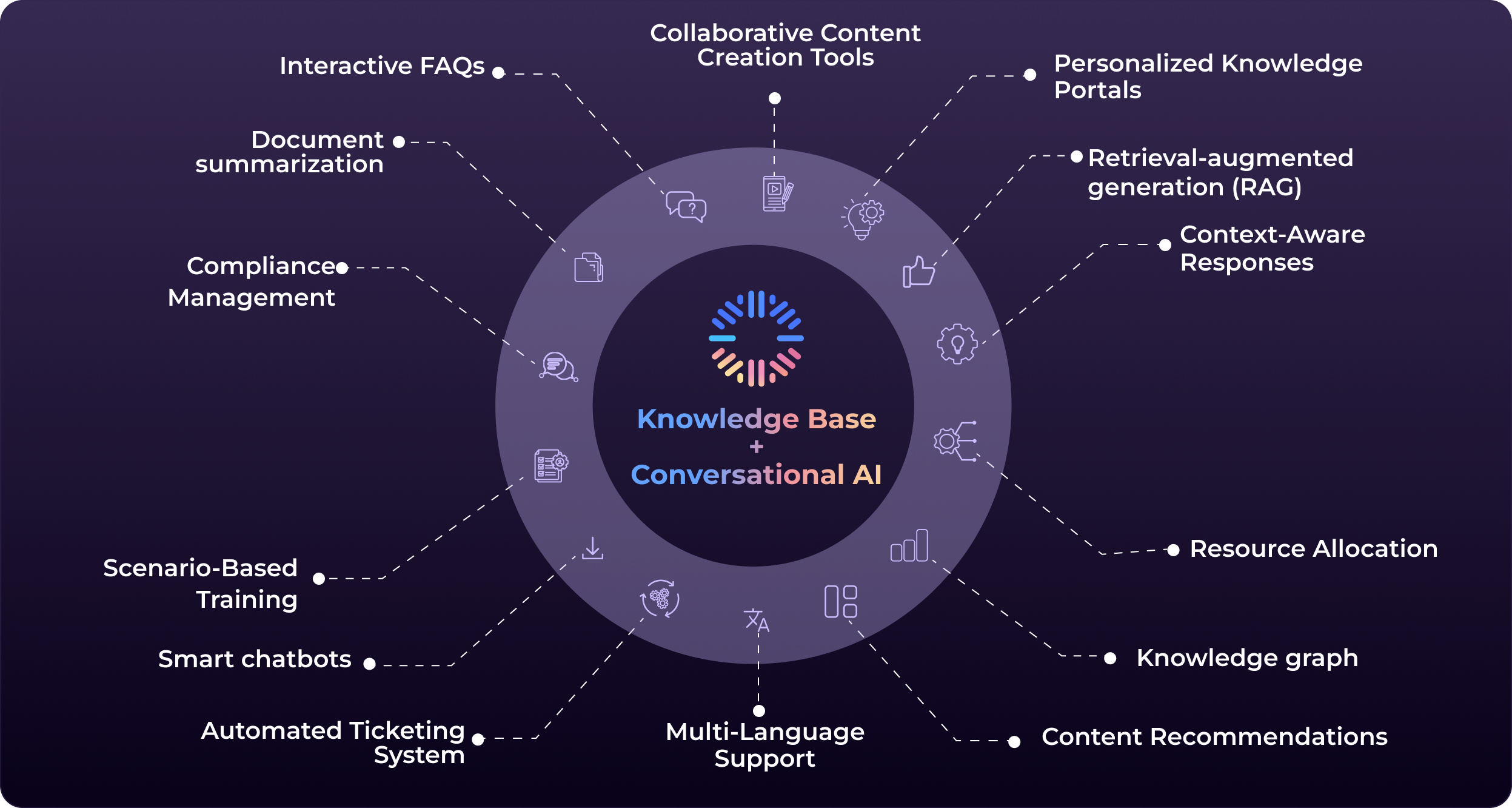
Odin AI provides tools for businesses to:
- Train chatbots with intuitive workflows and real-world conversation data.
- Continuously improve the chatbot’s performance by incorporating user feedback and updating the training process.
- Use features like NLP, intent recognition, and entity recognition to create chatbots that handle complex queries with ease.
Odin AI provides tools that simplify the training process for businesses. These tools address common challenges, such as using pre-built templates and workflows to train chatbots for specific tasks. These can include answering FAQs or managing sales inquiries.
The platform also allows businesses to update chatbots with user feedback, helping them improve over time. The use of advanced NLP capabilities helps manage complex conversations, such as handling multiple intents in a single query.
With Odin AI, businesses can create chatbots that:
- Respond accurately
- Adapt to new data
- Improve customer satisfaction while reducing the workload for human agents.
Steps to Conduct Chatbot Training With Odin AI
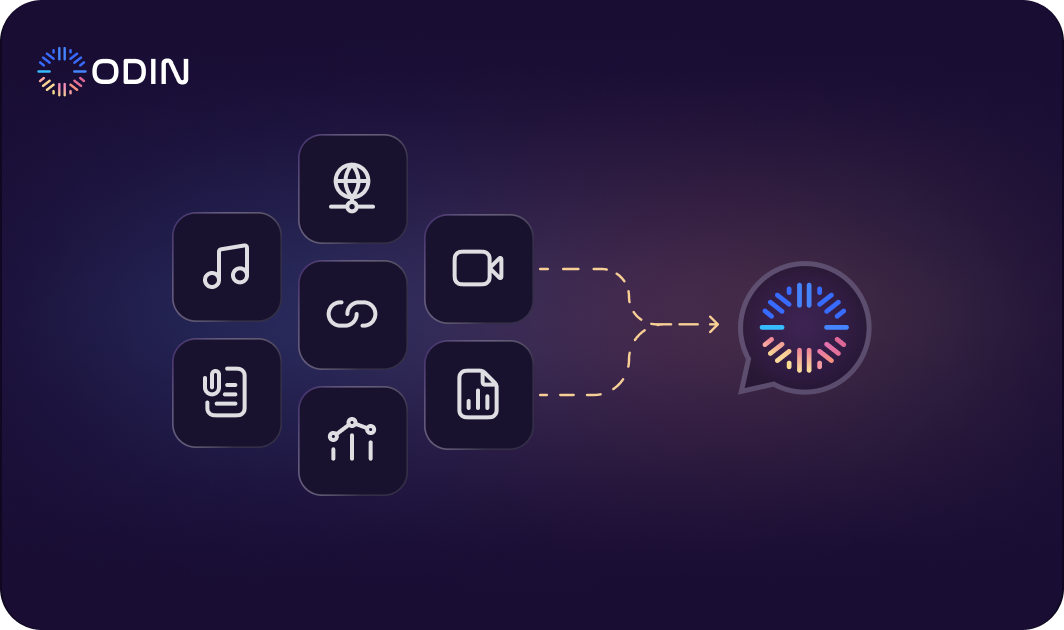
You can train your chatbot with Odin AI by defining its purpose, gathering data, and using the chatbot builder. Follow the steps below:
Step 1: Define the Chatbot’s Purpose
Identify the tasks it will handle, such as FAQs, tracking orders, or assisting with appointments.
Step 2: Gather and Train With Data
Collect training data, including FAQs and conversation examples, and use supervised learning to teach the bot accurate responses.
Step 3: Set Up and Test Using Odin AI’s Builder
Configure intents, entities, and rules in the chatbot builder and test its responses in real-world scenarios for accuracy.
Step 4: Incorporate Feedback and Retrain
Analyze negative feedback, refine the bot’s responses, and update it regularly with new data for better performance.
Step 5: Monitor and Optimize Performance
Track metrics like accuracy and response time, and adjust the chatbot to meet evolving customer needs and queries.
Experience quick and easy chatbot deployment with Odin AI!
AI Chatbot Training Methods and Techniques
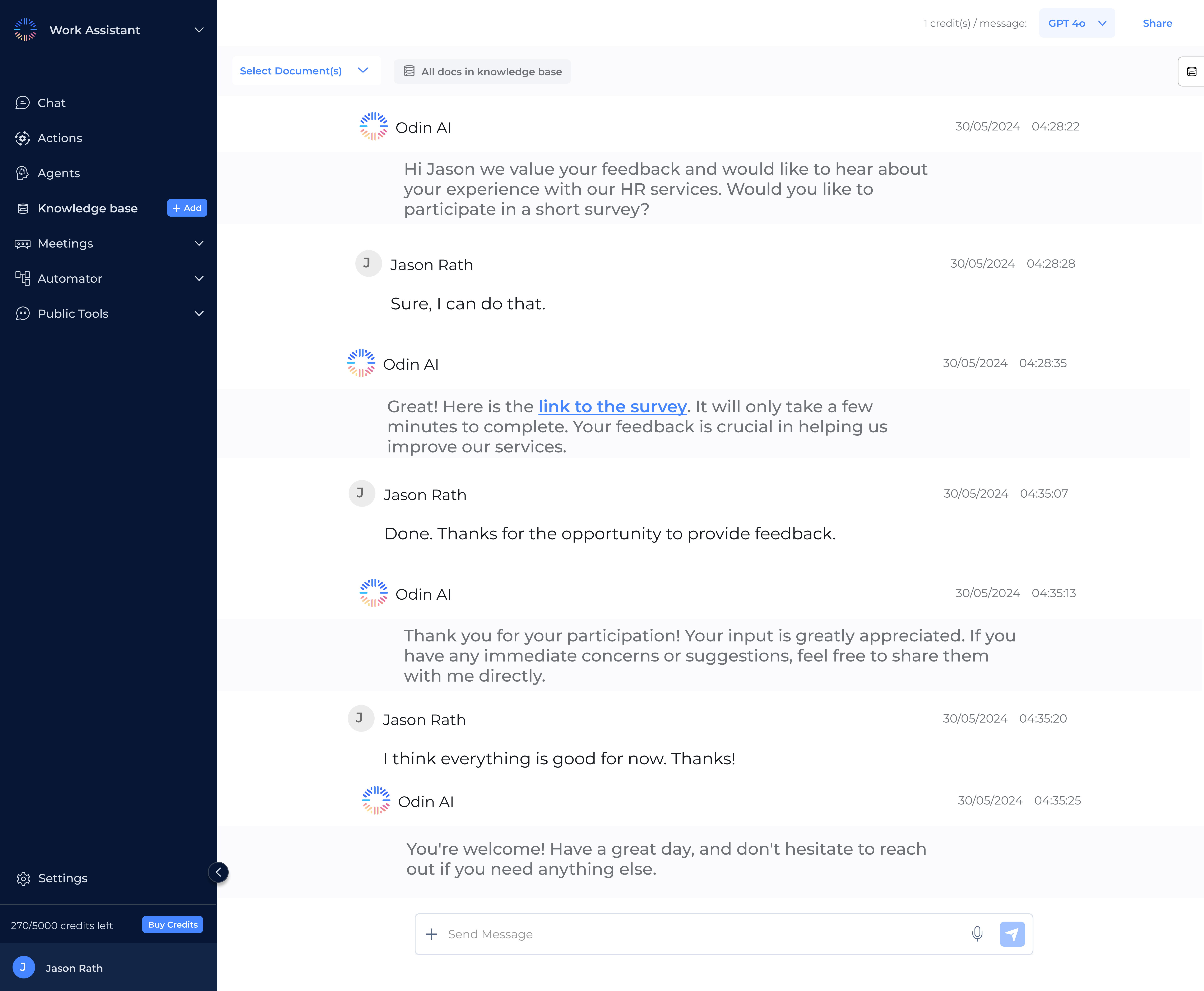
Check out some of the most common training methods effective in preparing your chatbot to communicate successfully.
Supervised Learning for Chatbot Training
Supervised learning helps train chatbots by using labeled training data. Each user query is paired with the correct response, teaching the chatbot how to provide accurate responses. This approach allows the chatbot to recognize patterns and handle similar queries more effectively.
For example, when a chatbot sees a query like “What’s my account balance?” paired with a response explaining the account details, it learns to associate such questions with the correct answer. This improves the chatbot’s ability to understand user intent and deliver relevant responses.
Natural Language Processing Techniques
Natural language processing allows chatbots to interpret and respond to human language. NLP helps break down user input into actionable parts:
- Intent recognition: Identifies what the user wants, such as booking an appointment or checking an order status.
- Entity recognition: Extracts specific details, such as names, dates, or product IDs, to personalize responses.
For example, a chatbot can interpret “Can I return this item?” as a request to process a return. NLP helps the bot recognize the intent and extract the product information needed to assist the user.
Rule-Based Chatbots
Rule-based chatbots use predefined rules to handle predictable queries. This approach is suitable for answering common user queries, such as FAQs or operating hours. Rule-based bots follow a structured path, making them useful for basic scenarios.
For example, a chatbot programmed to respond to “What are your store hours?” pulls this information from a predefined dataset, providing a straightforward answer.
Active Learning
Active learning allows a chatbot to seek clarification when user input is ambiguous. This method collects additional conversation data to improve future interactions.
For example, when a user says, “Check my order,” without providing an order number, the chatbot can ask, “Can you share your order number?” This helps resolve the query and adds valuable data for the bot’s improvement.
Using User Feedback
User feedback plays an important role in improving chatbot performance. Feedback highlights gaps in the chatbot’s responses, allowing businesses to add new training data and refine the bot’s capabilities.
For example, if users report dissatisfaction with how the chatbot handles refund requests, the feedback can guide updates to its training process, resulting in better outcomes for future interactions.
Training Domain-Specific Chatbots
Specialized training is necessary for domain-specific chatbots that handle industry-specific tasks.
A healthcare chatbot needs data about medical inquiries, while a financial chatbot requires training on banking terms and processes. Using relevant conversation data helps these chatbots handle complex queries with confidence.
Recommended Reading
Top 5 Chatbots for Customer Support in 2024
Applications of AI Chatbots
Artificial intelligence has become essential in virtually every industry, with varying degrees of prevalence. Below are some of the most popular AI chatbot applications.
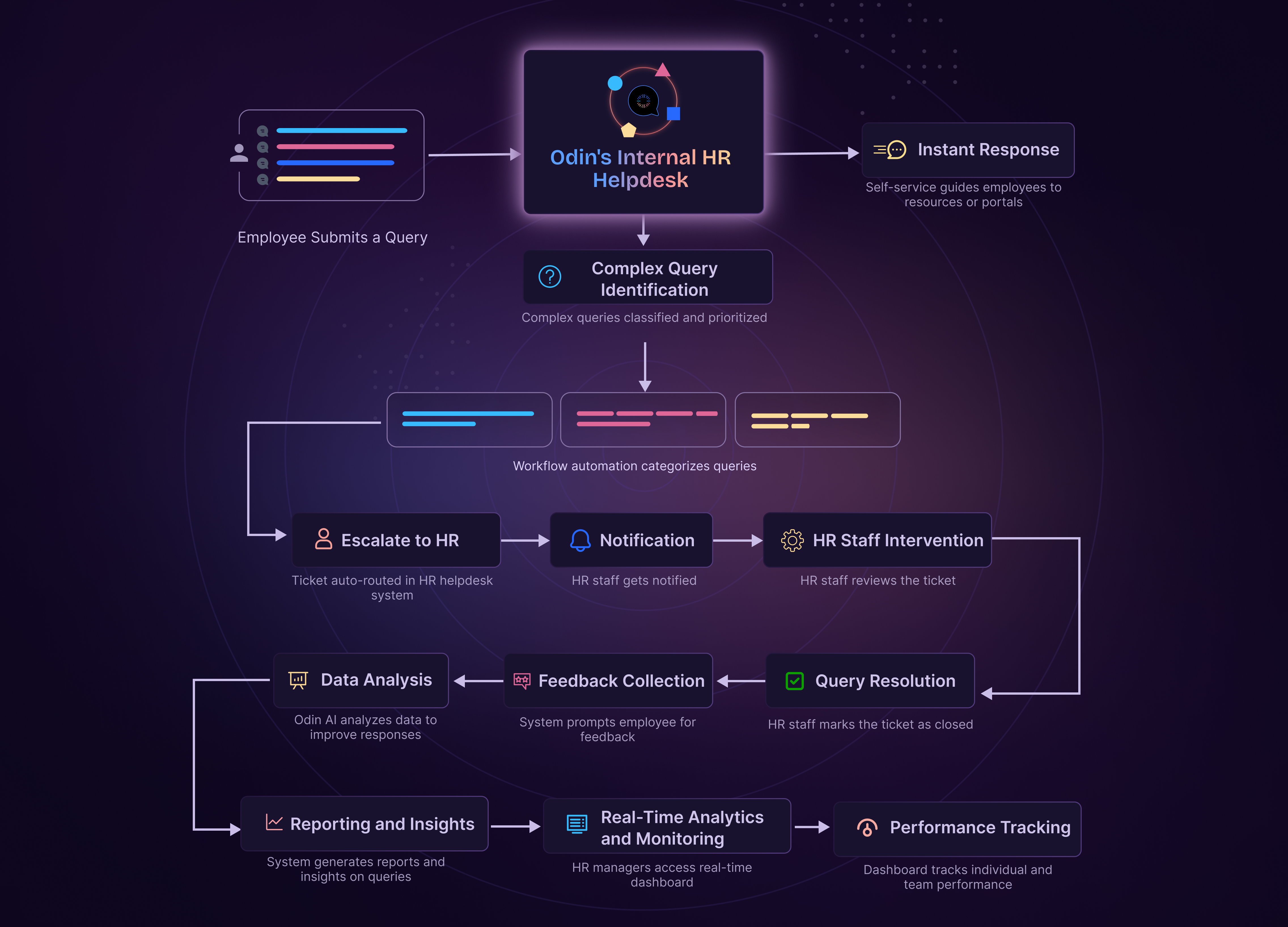
Customer Support
AI chatbots are transforming customer service by handling common user queries quickly and accurately. Using natural language processing and machine learning algorithms, they interpret user input and provide relevant responses.
Trained with high-quality training data, these bots can answer questions about store hours, order tracking, or return policies. The result is better customer satisfaction while reducing the workload on human agents.
For instance, an AI chatbot in retail can process a query like “Where is my order?” and deliver accurate tracking details, ensuring faster response time.
Healthcare
Healthcare chatbots help patients with appointment scheduling, symptom checks, and health information. They provide accurate responses that align with patient needs using domain-specific chatbots and specialized training data.
A chatbot can answer queries about specific symptoms and ailments by pulling data from a trusted knowledge base and offering helpful advice.
Banking and Finance
In banking, chatbots assist users with account inquiries, payments, and loan applications. Trained with financial data, these bots securely handle customer queries and offer reliable answers.
Financial institutions can also deploy their AI agents to support the automation of certain processes. These include invoice processing, financial document retrieval, and accounts payable.
HR and Recruitment
HR chatbots streamline tasks like answering employee questions, assisting with onboarding, and scheduling interviews. They cater to employees with different skill levels by offering clear and consistent guidance.
An example would be letting users verify the company’s leave policy by accessing the HR database and delivering the right answer.
Travel and Hospitality
In the travel industry, chatbots handle bookings, itinerary updates, and general inquiries. Powered by AI models, they process large volumes of user queries efficiently.
For instance, a chatbot can handle, “Can you rebook my flight?” by accessing booking systems and offering the best options without delays.
Sales and Lead Generation
AI chatbots assist with sales by qualifying leads, gathering customer information, and recommending products. By learning from new data and past interactions, they refine their ability to engage with potential customers effectively.
Marketing Campaigns
Chatbots improve marketing campaigns by engaging users, sharing promotions, and answering product-related questions. By analyzing user interactions, they provide actionable insights that enhance campaign effectiveness.
Why Odin AI Leads the Way in Chatbot Training
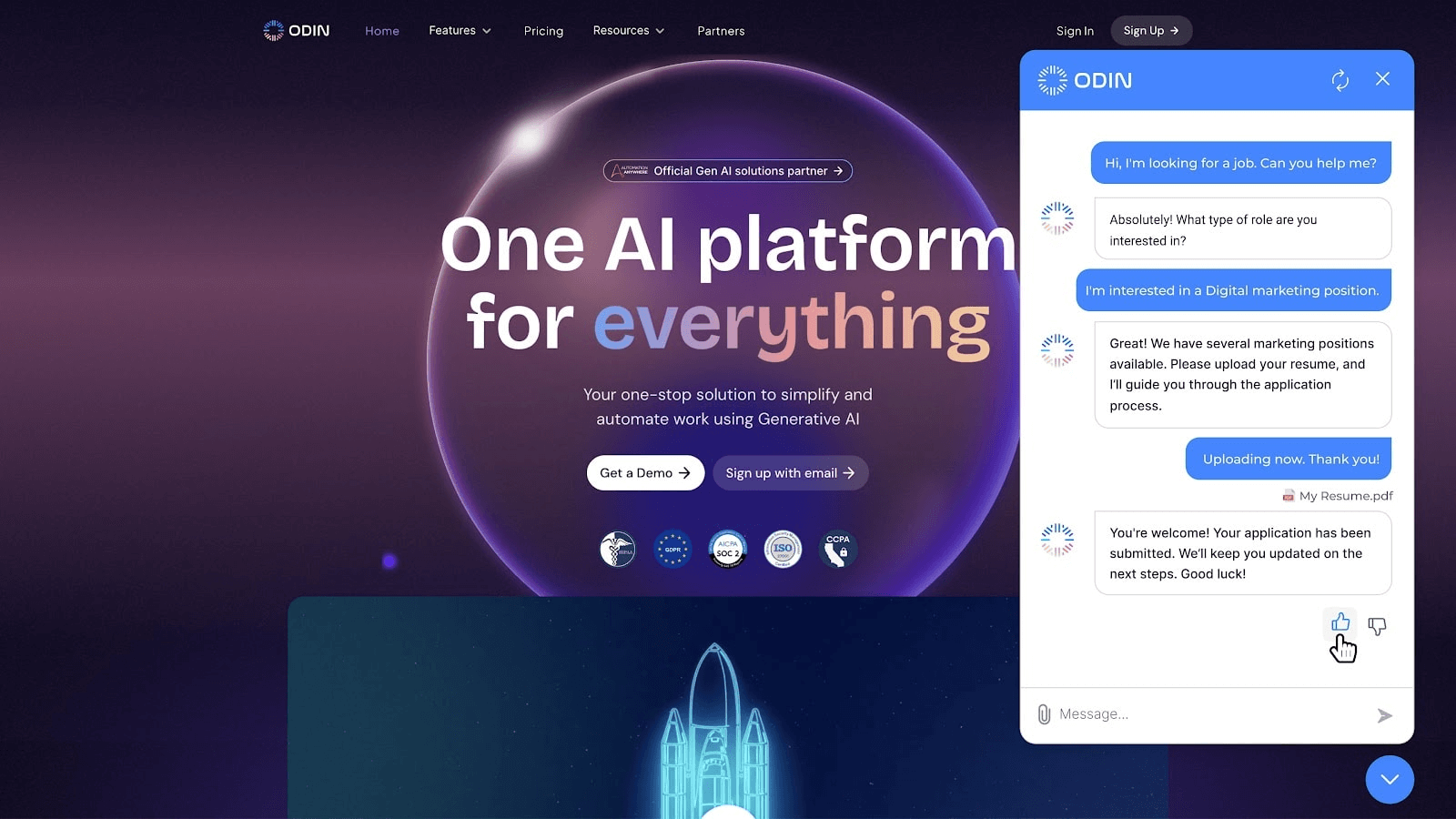
Odin AI simplifies the process of improving how a chatbot performs. By incorporating tools for analyzing negative feedback, businesses can identify gaps in the chatbot’s responses and retrain it with updated training data.
The ability to regularly retrain the chatbot keeps it aligned with evolving customer expectations, ensuring its functionality stays relevant.
Have more questions?
Contact our sales team to learn more about how Odin AI can benefit your business.
FAQs About Odin AI Chatbot Training
AI chatbot training is the process of teaching an AI chatbot to handle user queries and provide accurate responses using training data, natural language processing (NLP), and machine learning algorithms. Proper training helps the chatbot deliver relevant information, understand user intent, and improve customer satisfaction by minimizing irrelevant information in its responses.
Businesses can analyze user feedback collected during interactions to refine their chatbots. Feedback on irrelevant information, missed intents, or incomplete answers can highlight areas for improvement. Odin AI allows businesses to integrate this feedback into the training process, improving the chatbot’s accuracy and adaptability.
Odin AI focuses on continuous improvement by supporting regular updates to the chatbot model. Businesses can use negative feedback and conversation data to identify areas where the chatbot underperforms and retrain it for better results. This regularly retrains the chatbot to align with changing customer expectations, improving chatbot performance and user satisfaction.
Odin AI’s chatbot builder is designed for businesses with different skill levels. It offers an intuitive interface, pre-built templates, and step-by-step workflows, allowing users to start building chatbots quickly. The platform also supports natural language processing NLP, making it easier for chatbots to understand how people communicate.
Odin AI supports multilingual chatbot training, enabling businesses to create chatbots that respond in multiple languages. This feature helps meet the needs of diverse customer bases and enhances user interactions globally.
With Odin AI’s advanced tools, businesses can quickly train and launch a chatbot. The setup time depends on the complexity of the bot and the available training data, but most projects can begin functioning within a few days.
Yes, Odin AI chatbots handle both basic questions and complex queries. By using predefined rules for simple tasks and advanced AI models for complex interactions, these chatbots adapt to user needs while maintaining fast response times.
Odin AI uses features like named entity recognition, intent classification, and neural networks to refine chatbot responses. Businesses can retrain their chatbots with more data, integrate feedback, and continuously enhance their ability to provide the right answer.


